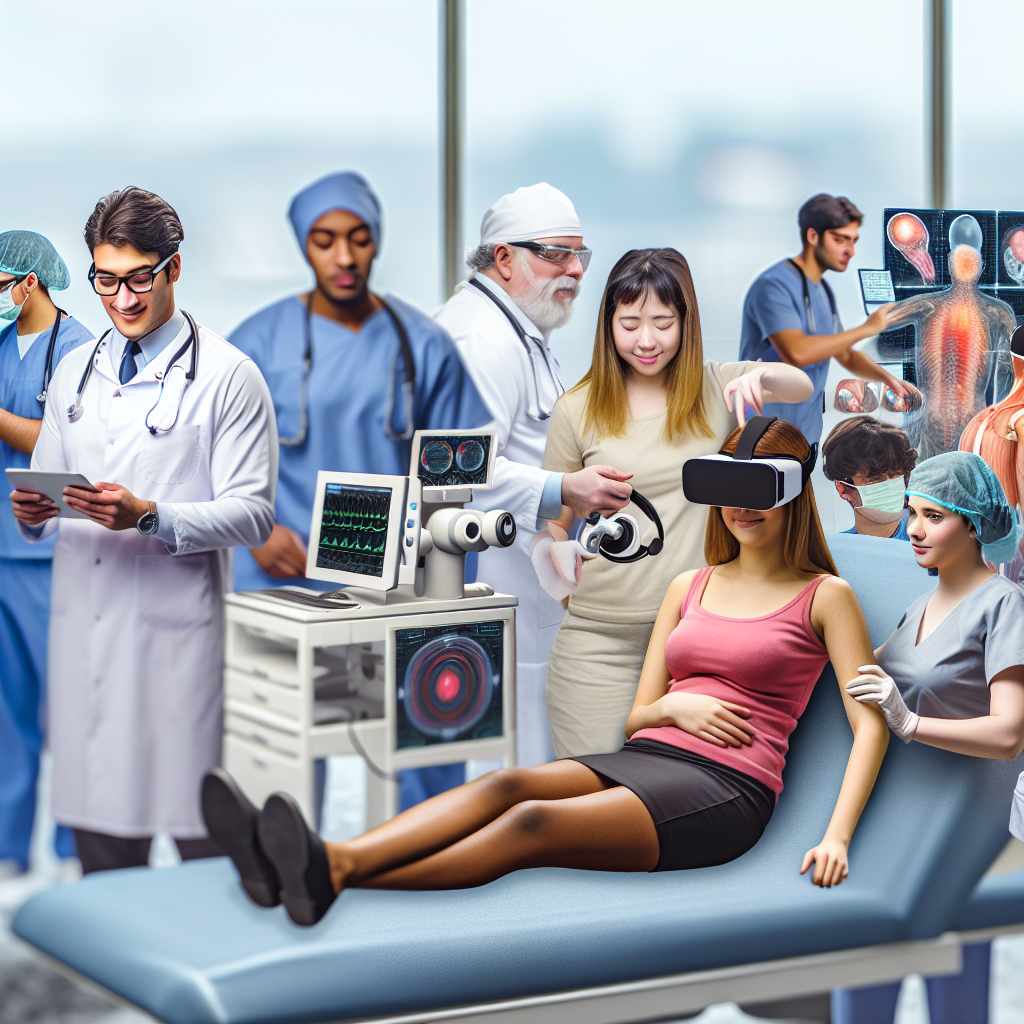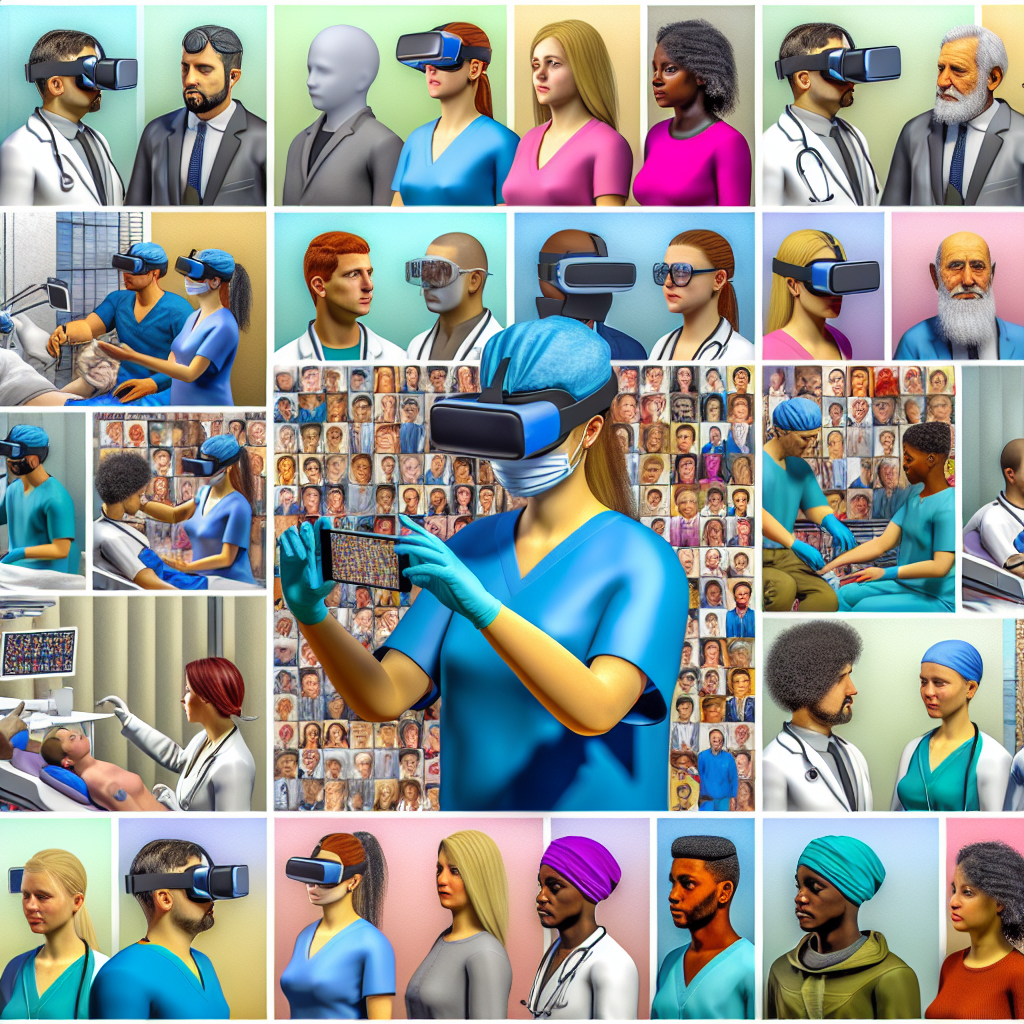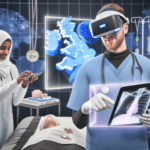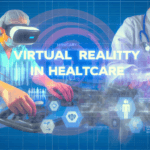Explore the growing market size of augmented and virtual reality in healthcare, enhancing patient care and medical training.
Augmented And Virtual Reality In Healthcare Market Size

Table of Contents
Augmented and Virtual Reality in Healthcare Market Size

The integration of augmented reality (AR) and virtual reality (VR) into the healthcare sector marks a significant technological advancement, promising to revolutionize patient care, medical training, and healthcare management. This article explores the current market size, growth potential, applications, and future prospects of AR and VR technologies in healthcare.
Understanding AR and VR in Healthcare
Augmented reality and virtual reality are distinct yet complementary technologies used in healthcare. AR overlays digital information onto the real world, enhancing the user’s perception of reality with additional data or graphics. VR, on the other hand, creates a completely immersive environment, isolating the user from the physical world and replacing it with a digital simulation. Both technologies offer unique benefits and applications in healthcare, which are driving their adoption and market growth.
Current Market Size and Growth Projections
The global market for AR and VR in healthcare has witnessed substantial growth over the past few years. According to a report by Grand View Research, the market was valued at approximately USD 2 billion in 2020 and is expected to grow at a compound annual growth rate (CAGR) of around 27.2% from 2021 to 2028. This rapid growth is fueled by increasing investments in healthcare technology and a growing emphasis on enhancing patient care and medical training.
Key Drivers of Market Expansion
Several factors contribute to the expanding use of AR and VR in healthcare:
- Enhanced Medical Training: AR and VR provide medical professionals with realistic training environments and simulations, allowing them to practice procedures and make decisions in a risk-free setting.
- Improved Patient Care: These technologies offer innovative ways to diagnose, treat, and manage diseases, with VR being used for pain management and rehabilitation, and AR assisting in complex surgeries by providing real-time data visualization.
- Remote Healthcare: AR and VR enable remote consultations and surgeries, which are crucial in providing access to healthcare services for remote or underserved populations.
- Technological Advancements: Continuous improvements in AR and VR technologies, such as better sensors, more immersive experiences, and reduced costs, are making these tools more accessible and effective in healthcare settings.
Applications of AR and VR in Healthcare
The applications of augmented and virtual reality in healthcare are diverse and impactful. Below are some of the key areas where AR and VR are making significant inroads:
- Surgical Assistance: AR systems such as Microsoft’s HoloLens are being used in surgery to provide surgeons with real-time, 3D visualizations of patient anatomy. This can help in planning and executing complex surgical procedures with higher precision.
- Medical Training and Education: VR simulations are used extensively in medical education, allowing students to experience complex medical scenarios without the need for real-life exposure. Companies like Osso VR provide platforms for surgical training and assessment, enhancing the learning process for medical students and professionals.
- Patient Rehabilitation: VR applications in rehabilitation, such as those developed by companies like MindMaze, offer immersive therapies that promote cognitive and physical recovery. These tools are particularly useful in stroke rehabilitation, helping patients regain motor and cognitive functions more effectively.
- Mental Health Management: VR is also employed in the treatment of conditions such as PTSD, anxiety disorders, and phobias. Virtual environments can be used to safely expose patients to their triggers and teach coping mechanisms under controlled conditions.
Case Studies Highlighting Impact
Several case studies illustrate the successful implementation and benefits of AR and VR in healthcare:
- Case Study 1: Use of VR in Pain Management – A study conducted by Cedars-Sinai Medical Center tested the use of VR scenarios to reduce pain in hospitalized patients. Results showed a significant reduction in pain scores compared to a control group, highlighting VR’s potential as a non-pharmacological pain management tool.
- Case Study 2: AR for Surgical Procedures – A project at Johns Hopkins University applied AR during spinal surgery. Surgeons used AR goggles to “see through” the patient’s anatomy, which significantly improved accuracy and reduced surgery times.
Challenges and Future Outlook
Despite the promising growth and applications, there are challenges to the widespread adoption of AR and VR in healthcare:
- High Costs: Initial setup and ongoing maintenance costs can be prohibitive for some healthcare providers.
- Technological Limitations: Issues such as latency, image resolution, and user discomfort need further resolution to enhance user experience.
- Regulatory Hurdles: Stringent regulations in healthcare can slow down the introduction of new technologies into clinical practice.
Looking ahead, the future of AR and VR in healthcare is bright. Continued technological advancements and increasing clinical acceptance are expected to drive further adoption. Moreover, as more success stories emerge, the benefits of AR and VR in enhancing healthcare delivery will become more widely recognized and utilized.
Conclusion
The market for augmented and virtual reality in healthcare is poised for significant growth, driven by their potential to enhance medical training, improve patient care, and streamline healthcare operations. While challenges remain, the ongoing developments and increasing integration of these technologies into healthcare practices suggest a transformative impact on the industry. As we continue to witness innovations in AR and VR, the healthcare sector stands on the brink of a technological revolution that could redefine traditional medical practices.








